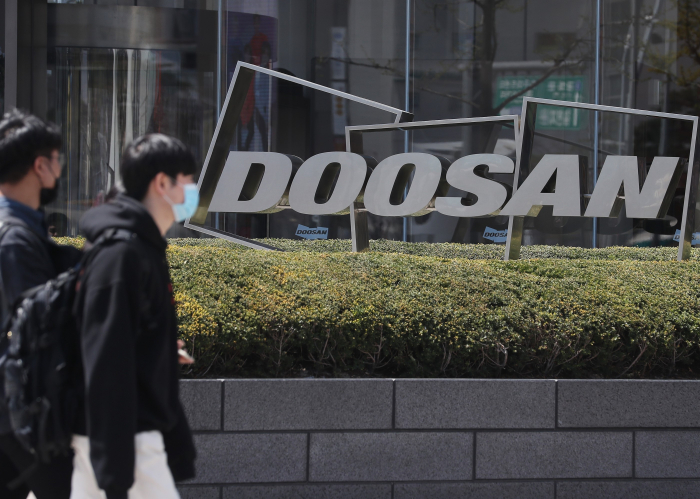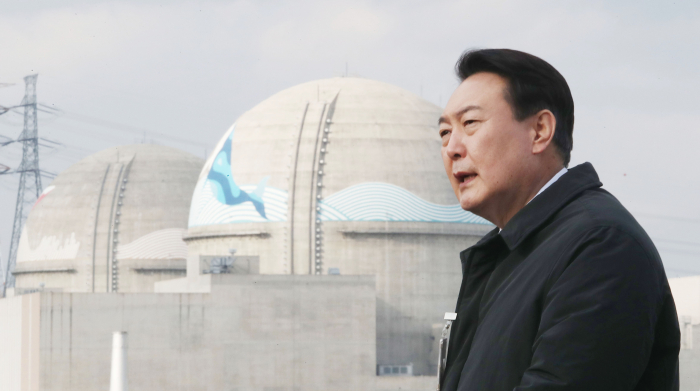Companies
Doosan Enerbility turns around with reform, new orders
Its debt-to-equity ratio drops to a 19-year low as it swings to first net profit in eight years
By May 06, 2022 (Gmt+09:00)
2
Min read
Most Read
LG Chem to sell water filter business to Glenwood PE for $692 million


Kyobo Life poised to buy Japan’s SBI Group-owned savings bank


KT&G eyes overseas M&A after rejecting activist fund's offer


StockX in merger talks with Naver’s online reseller Kream


Mirae Asset to be named Korea Post’s core real estate fund operator



South Korea's major power plant builder Doosan Enerbility Co. has significantly improved its financial health, with its debt-to-equity ratio tumbling to its lowest level in 19 years.
The key unit of Doosan Group turned to the black in eight years in 2021, and its order backlog increased to the level equivalent to two years and five months of workload, or 13.6 trillion won ($11 billion).
The debt-to-equity ratio at Doosan Enerbility decreased to 134.2% as of end-March of this year on a consolidated basis, versus 265.3% a year earlier, according to data from the Financial Supervisory Service on Thursday.
The latest number represents the company's lowest gearing ratio since hitting 127.2% in 2003. Its net debt, or borrowings after cash and cash equivalents, dwindled by almost half to 3.6 trillion won as of end-March from the year previous.
Last year, the plant builder reported its first net profit in eight years of 645.8 billion won.
In the first quarter of this year, sales grew 30% on-year to 3 trillion won. But operating profit fell by 21% to 192.1 billion won during the same period, weighed by soaring raw material prices.

Painting a brighter outlook, the incoming government pledged to revive the construction of new nuclear power plants shelved under the current administration and extend the lifespans of the existing ones.
Outgoing President Moon Jae-in had planned to drastically cut nuclear power to 6.1% of energy sources by 2050, compared with 26.8% in 2017 when Moon took office as president.
Doosan takes charge of the construction of two nuclear plants in Uljin, Gyeongsang Province. Under his nuclear phase-out policy, however, it has not been paid for the 492.7 billion won it earlier spent on building relevant facilities.
RESTRUCTURING EFFORTS
Doosan Enerbility had fallen into a liquidity crisis on the back of financial support to Doosan Engineering & Construction Co. (Doosan E&C).
Over the past 10 years, Doosan Enerbility and other sister companies had together injected as much as 2.5 trillion won into Doosan E&C.
Doosan Group in 2020 was rescued by 3 trillion won in emergency funding from creditor banks on the condition that it carries out painful restructuring, including asset sales.
Since 2020, Doosan Group has sold Club Mow CC, a golf course operator, for 185 billion won; NEO Plux, an investment firm, for 73 billion won; Doosan Tower, its headquarters building, for 800 billion won; Doosan Solus, a copper foil manufacturer, for 698.6 billion won; Doosan Mottrol for 453 billion won; and Doosan Infracore Co. for 850 billion.
Last year, the group also unloaded a majority stake in Doosan E&C to a domestic consortium for 138 billion won.
Its core unit Doosan Enerbility had raised a total of 2.45 trillion won in fresh capital through two rounds of rights offerings between December 2020 and February 2022.
In a bid to find a new growth engine, Doosan has bought a stake in NuScale Power Modules (NPM), a US manufacturer of small modular reactors (SMR), from which it recently won an order to supply key materials for SMRs.
SMRs are emerging as next-generation energy sources due to their smaller investment cost and lower carbon emissions than large nuclear power plants.
Write to Kyung-Min Kang at kkm1026@hankyung.com
Yeonhee Kim edited this article
More to Read
-

-

-
 Mergers & AcquisitionsDoosan sells E&C, closer to exiting self-rescue program
Mergers & AcquisitionsDoosan sells E&C, closer to exiting self-rescue programNov 19, 2021 (Gmt+09:00)
3 Min read
Comment 0
LOG IN


